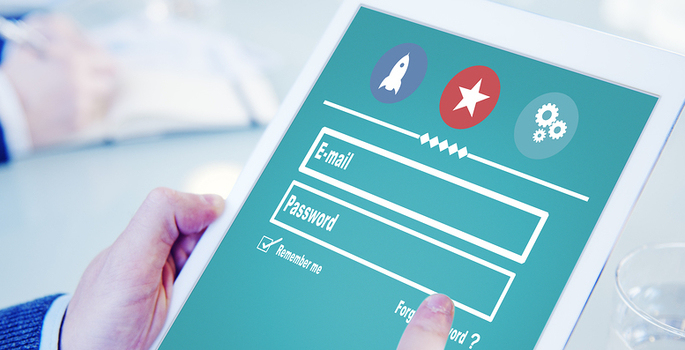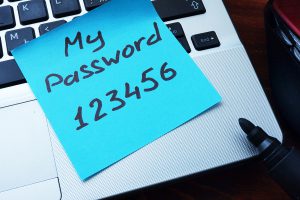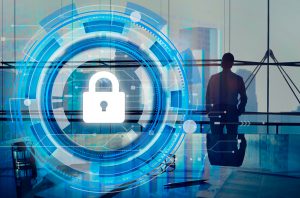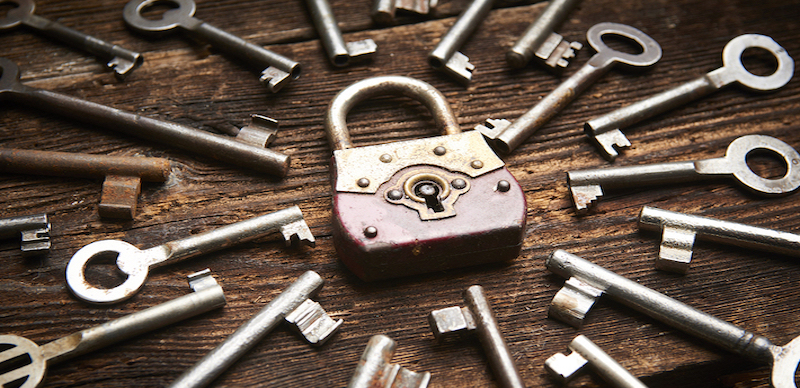
Despite warnings by experts on password security and numerous data breaches, password habits today tend to lean more toward the side of lesser security—and sadly as data shows, the proof of that is, as they say, in the pudding.
Over 60% of recent data breaches have stemmed from default, stolen, or weak passwords, serving as clear evidence of the damage and havoc a password in the wrong hands can create. So now as this information sinks in, it begs an obvious question—what is a safe password?
Here, we provide a breakdown on not only the common password practices that land their users in later troubles, but also why taking password security seriously from personal life all the way through business is essential to protecting your sensitive document management systems and personal or proprietary information.
Where Passwords Go Wrong
 Recent increases in online identity theft and major data breaches have left internet security a much greater priority, and for many companies, one of the first steps to creating a more secure environment is for the user passwords trying to be hacked becoming more complicated.
Recent increases in online identity theft and major data breaches have left internet security a much greater priority, and for many companies, one of the first steps to creating a more secure environment is for the user passwords trying to be hacked becoming more complicated.
Today a number of sites and apps require passwords to include a range of numbers, letters, and in some cases special characters. The majority of people understand these are ingredients to a more secure password, however as a recent study by Lab42 on the psychology behind risky password habits goes on to explain, for many password security stops there.
To give you a better idea, here are just a few of the most common and easy-to-guess password choices which continue to put users accounts and information at risk:
- Alphabetic/Numeric Only – Many platforms are raising password requirements, but there are still sites with minimal standards. Although using just letters or numbers for passwords makes it easier to remember, it makes cracking your password a far simpler task also, as a smaller pool of characters means less password combinations to try.
- Using Easily-Obtainable/Public Information Related to Yourself – Nearly 50% of users will include family names or initials in passwords, while an additional 40% will use important dates and numbers like birthdays, anniversaries, or graduation dates—all of which can be found through social media with ease.
- Common Letter or Number Keyboard Patterns – Among the most common password choices are basic keyboard patterns—all of which are easy-to-guess and the first go-to for hackers. Topping the list are passwords including “123456”, “qwerty”, “password”, “111111”, and “qwerty123”.
- Using the Shortest Passwords Possible – Like the range of different character types used in passwords, shorter passwords lead to fewer password combinations and lower password security as well.
While a password with any of the above risks included is already one which may need some reconsideration, above all, the greatest password threat to keep in mind in the danger of reusing passwords—no matter how secure they are.
Just like the importance of creating variety and a number of combinations in passwords, varying passwords from site-to-site and account-to-account is critical, as the more places a single password is used, the more opportunities a stolen password has for doing damage across not just across a social media account, but also retail or financial accounts as well.
Password Strength: Why You Still Need Your Wheaties
 With the rapid evolution and adoption of digital technologies in both business and personal life, not only passwords are changing, but the way information is stored is also making a new transition.
With the rapid evolution and adoption of digital technologies in both business and personal life, not only passwords are changing, but the way information is stored is also making a new transition.
Using document management systems (DMS), businesses are now able to conveniently store their massive inventories of documents, data, and other information electronically, however unlike high-security offsite storage facilities for paper records, digital systems like a DMS also make this information far more accessible.
That’s where your passwords come back into the picture. Almost any well-secured DMS one finds will have some form of encryption system in place, which helps to protect information from misuse by rendering the information unreadable.
In order for the rightful owners and users to access this encrypted information, a password-protected encryption key is used—which, just like a password to a sensitive banking account, is the final wall between the account and a hacker.
As such, the strength and protection of passwords from highly sensitive encryption keys to passwords for entertainment and social media accounts must be and always remain a top-priority for both average users and IT experts alike.
Need Storage Options for Password-Protected Information? Get Free Quotes on Document Management Systems Today
While topics for internet and computer security can range from malware and anti-virus software to complex biometric recognition systems, at the foundation of protection lies the protection of passwords which grant access to one’s sensitive information.
At Record Nations, we work with a nationwide network of the top document management system providers in order to provide the secure options individuals and businesses need for storing their password-protected documents and data.
To learn more about the importance of passwords with secure document management or to get started with establishing a password-protected DMS for documents you’re currently scanning and converting to digital format, just give us a call at (866) 385-3706, or simply fill out the form to the right to get free document storage quotes today.
Additional Password Resources
“Password Protected”: The Password’s Role in Modern Document Management Systems
The importance and value of passwords has drastically grown in recent years—playing a role now in protecting not just personal information, but also having a huge part in the security of document management systems. Get the breakdown on the modern password and why placing high-priority on their security may be the difference between your business and a data breach in this in-depth white paper.
Will Biometrics Replace Passwords?
Password security is improving with users adding a range of characters and making passwords longer, however if the passwords is ever stolen it can still be used by an unauthorized user to access accounts. With the emergence of biometrics which use human characteristics like fingerprints or facial recognition however, passwords can be a much harder code to crack.
The Evolution of Password Security
While at its beginnings the password was just a 4-digit PIN code, the password has needed to adapt with changing technologies—moving from basic passwords and continuing to require complexity, length, and secure storage in order to protect information. Learn more more about password security and what the future has in store for passwords here.












